Genesis and Rise
On August 30, 2017, a tropical wave emerged off the coast of Africa near the Cape Verde Islands. This seemingly innocuous weather disturbance would evolve into one of the most powerful and destructive hurricanes in the Atlantic basin—Hurricane Irma. From the outset, conditions were favorable for rapid development. The sea surface temperatures were warm, and the wind shear was minimal, allowing Irma to intensify swiftly.
As Irma moved westward, it transformed from a tropical storm into a full-fledged hurricane by August 31. The rapid intensification continued, and within 24 hours, Irma had become a Category 3 hurricane, a major hurricane on the Saffir-Simpson scale. The storm’s central, dense, overcast, and developing eye hinted at its potential for further growth.
Artist Humberto Poidomani, who lives in Miami, is no stranger to hurricanes, having experienced several in his lifetime. He watched with awe and dread as Irma grew in strength. Inspired by the raw power and beauty of nature’s fury, Poidomani began working on a series of paintings to capture the essence of what he saw unfolding on the weather maps and satellite images. Hurricane Irma Art by Humberto Poidomani
The Monster Awakens
By September 4, Irma had undergone an eyewall replacement cycle, a common phenomenon in intense hurricanes that often leads to intense fluctuations. However, this did not deter Irma’s growth. By September 5, the storm had reached Category 5, with sustained winds of 175 mph (282 km/h). Irma had become an annular hurricane, characterized by its large, symmetric eye and intense, uniform convection.
On September 6, Irma made its first landfall on the island of Barbuda at peak intensity. The small island was devastated. Buildings were flattened, trees uprooted, and the island’s infrastructure was left in ruins. The island’s weather station recorded a minimum pressure of 914 mbar (27.0 inHg), making Irma one of the most intense hurricanes ever to strike the Atlantic region.
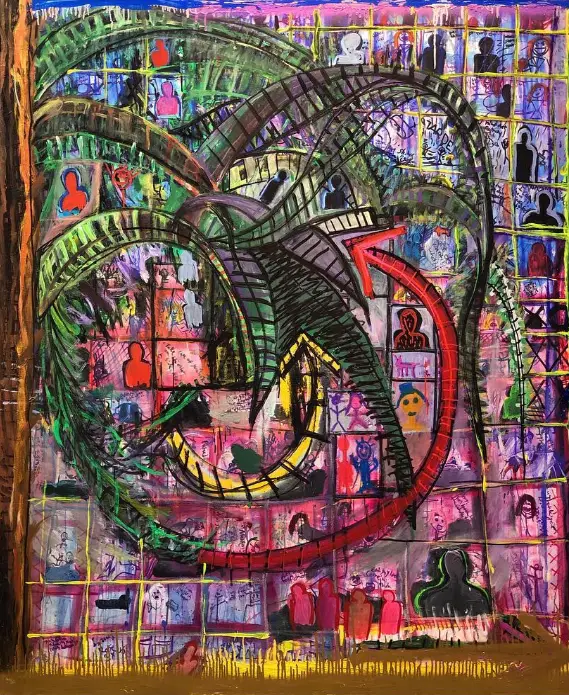
Poidomani’s first masterpiece, “Irma’s Wrath,” depicted this moment. Using acrylic and spray paint on a large canvas, he captured the hurricane’s swirling chaos and raw power as it tore through Barbuda. The painting’s vibrant colors and dynamic strokes conveyed the sheer force of the wind and the sense of utter devastation.
The Path of Destruction
After ravaging Barbuda, Irma continued its westward march. It struck the islands of Saint Barthélemy, Saint Martin, and the Virgin Islands with similar ferocity. The storm’s massive size and intensity meant that even areas not directly in its path experienced significant impacts.
On Saint Martin, the destruction was almost total. Buildings were leveled, marinas were destroyed, and the island’s infrastructure was crippled.
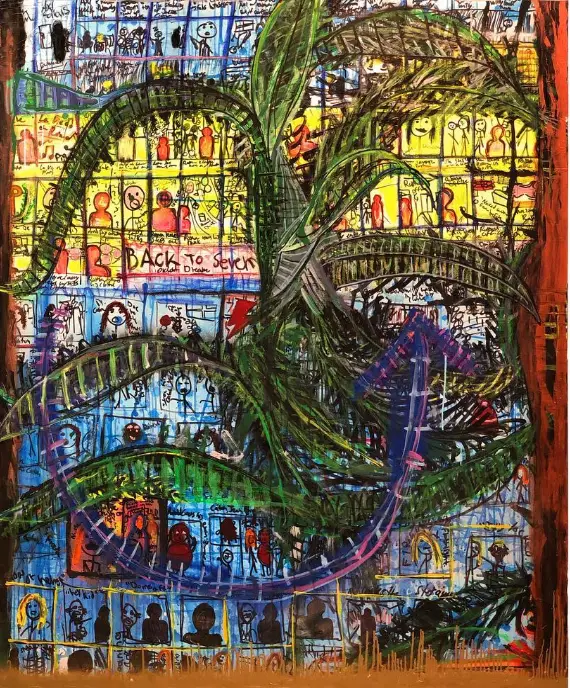
The airport, a critical lifeline for the island, was left inoperable. Humberto Poidomani’s second painting, “Devastation in Saint Martin,” captured the aftermath. The composition was a stark, haunting scene of broken structures and scattered debris, with a dark, turbulent sky overhead. This painting highlighted the physical destruction and emotional toll on the island’s inhabitants.
The Caribbean's Nightmare
Irma’s journey through the Caribbean was a nightmare for many. It caused catastrophic damage in the British Virgin Islands, the Turks and Caicos Islands, and the Bahamas. Each of these areas suffered from severe wind damage, storm surge, and flooding. Entire communities were displaced, and the recovery process seemed daunting.
In Cuba, Irma made landfall with winds of 165 mph (266 km/h), becoming the first Category 5 hurricane to strike the island since 1924. The northern coast was battered by high winds and massive waves, causing widespread destruction. Irma then weakened slightly as it moved along the coast but remained a formidable force.
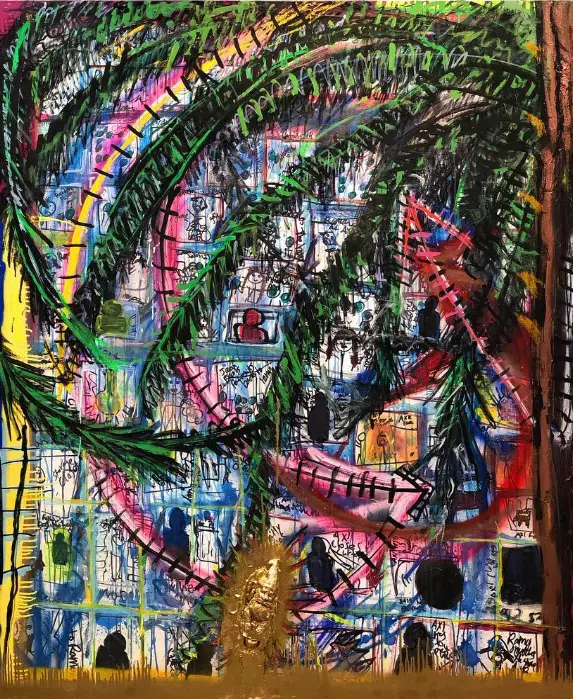
Poidomani’s third painting, “Cuba’s Struggle,” depicts the Cuban coastline hammered by giant waves under a stormy sky. The painting’s dramatic use of light and shadow emphasizes the battle between land and sea, reflecting the resilience of the Cuban people in the face of such adversity.
The Florida Menace
As Irma moved away from Cuba, it re-intensified over the warm waters of the Straits of Florida. By September 10, Irma made landfall in the Florida Keys as a Category 4 hurricane. The storm surge inundated low-lying areas, and the powerful winds caused significant damage.
The Florida mainland, particularly the southwestern coast, faced the brunt of Irma’s fury. Cities like Naples and Marco Island were hit hard, with widespread flooding, downed trees, and damaged buildings. Though spared the worst, Miami still experienced strong winds and heavy rain, leading to power outages and flooding in some areas.
In his fourth painting, “Florida Under Siege,” Poidomani portrayed the Florida coastline as Irma approached. The artwork powerfully depicted the looming threat, with dark clouds and churning seas juxtaposed against the vulnerable human settlements. This painting was a stark reminder of the delicate balance between human development and nature’s uncontrollable forces.
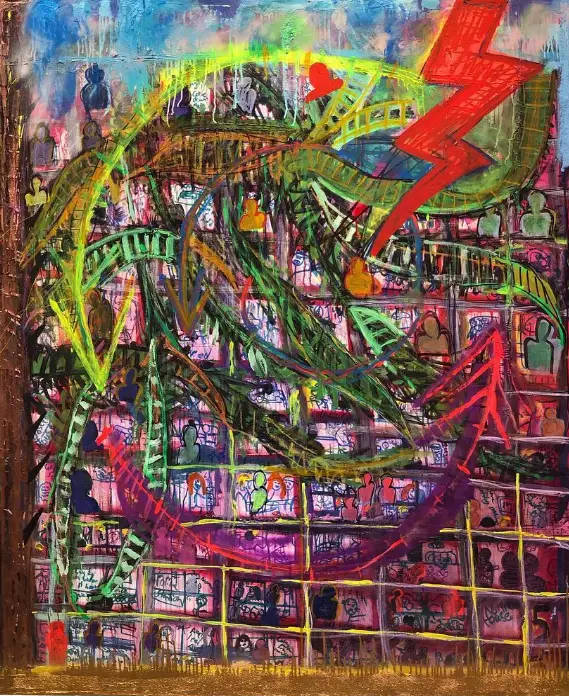
The Aftermath
By September 12, Irma had weakened to a tropical storm as it moved inland over the southeastern United States. However, its impact was still significant, with heavy rains and strong winds causing flooding and power outages in several states, including Georgia and South Carolina. The storm finally dissipated over Missouri on September 13.
The aftermath of Hurricane Irma was a period of recovery and reflection. The storm caused an estimated $77.2 billion in damage and resulted in 134 fatalities. The affected regions faced a long and arduous path to rebuilding and healing.
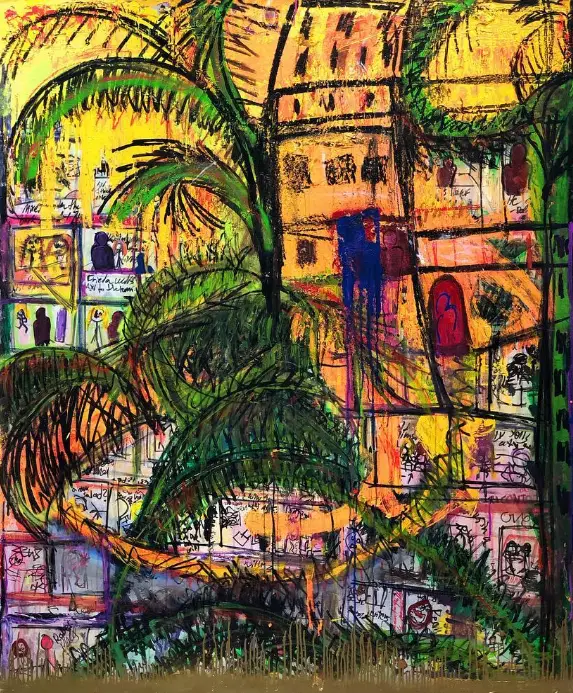
Poidomani’s fifth and final painting in the series, “Resilience,” focused on the human spirit’s ability to overcome and rebuild. The painting depicted a recovery scene, with people coming together to restore their communities amidst a scarred but healing landscape. It was a tribute to the resilience and determination of those affected by Irma.
Art as a Beacon of Hope
Humberto Poidomani’s paintings captured the full spectrum of Hurricane Irma’s impact—from its terrifying power to the communities’ resilience. These artworks were more than just visual representations; they were stories of survival, strength, and the enduring human spirit.
The five masterpieces, showcased in the Exceptional Art online gallery, were put up for sale, with a portion of the proceeds going to support recovery efforts in the hardest-hit areas. Poidomani’s art served as a beacon of hope and a reminder of the importance of unity and compassion in the face of natural disasters.
Through his work, Poidomani documented one of the most devastating hurricanes in recent history and provided inspiration and hope for those who lived through it. His paintings stood as a testament to the power of art to capture the essence of human experiences and to bring communities together in times of need.
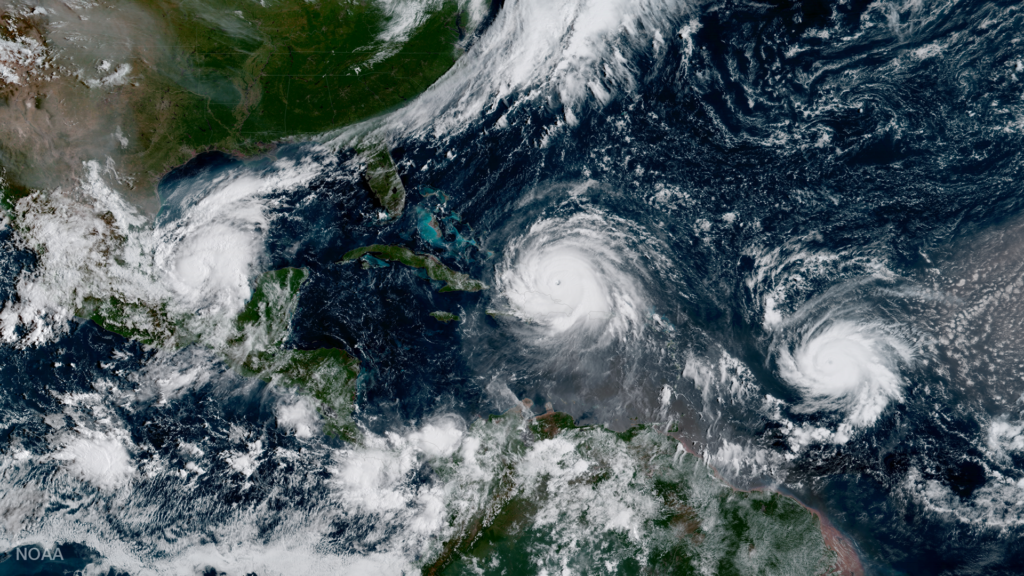
Three simultaneously active hurricanes—Katia, Irma, and Jose—captured on September 7, 2017, marking the first occurrence of such an event since 2010.
Irma's legacy
Hurricane Irma’s legacy is one of both destruction and resilience. The storm’s unprecedented power and the widespread devastation it caused will be remembered for generations. Yet, amidst the wreckage, stories of hope and recovery emerged, showing the strength and determination of those affected.
Humberto Poidomani’s Hurricane Irma Art immortalized these stories, offering a visual narrative that complemented the factual accounts of Irma’s impact. His paintings “Hurricane Irma Art by Humberto Poidomani” serve as a reminder of the power of nature, the fragility of human existence, and the enduring strength of the human spirit. Poidomani’s work stands as a symbol of hope, resilience, and the unwavering human will to overcome and rebuild as the world faces the challenges of natural disasters.
Hurricane Irma, From Wikipedia, the free encyclopedia